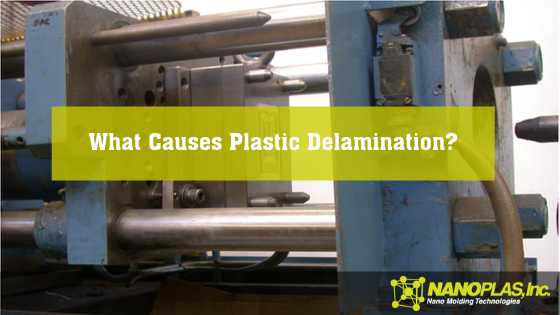
What Causes Plastic Delamination in Injection Molding?
What Causes Plastic Delamination in Injection Molding?

When you’re able to peel the surface of a molded part, layer by layer, you’re dealing with delamination, an injection-molding defect that is sometimes also known as lamination or layering. This is a bad sign—delamination hurts the strength of the part, thus making it unreliable and potentially dangerous, depending on the part’s intended use.
Common Causes of Delamination
Just like most injection-molding defects, delamination can be caused by one or more of several potential issues. The most common: incompatible materials. When two materials can’t bond together, it results in separation that very quickly becomes delamination.
“Incompatible materials” can be a number of things.
Two plastics that can’t properly bond.
Excess release agents coating the mold, which is why it’s so important to properly apply release agents.
Too much moisture on the material, which is usually due to a failure to completely dry the material before using it. During the molding process, moisture becomes steam, which leads to surface delamination.
Delamination can also be caused by high shear stress, too much injection speed, a high melt temperature or material degradation, so you should look at all potential issues while troubleshooting even though you’ll most frequently find your issue with the incompatibility of materials.
How to Eliminate Plastic Delamination
Preventing delamination first requires you to know the cause, but once you do, you should be able to get rid of the problem.
Make sure you’re using plastics that will properly bond with each other. Always take extra care to ensure every part that goes into the mold has been completely dried. When applying mold-release sprays, do so as intended so as not to overspray. If you find that you need more release spray than you know is wise, then your issue could be with the mold itself and you may want to rethink the design to make ejection easier.
If you find the issue to be with the molding process, such as shear stress or melt temperature, adjust those settings as necessary to eliminate delamination.
Nanoplas Mold Release Products
Our Heat Cure™ and Quick Cure coatings are specifically designed to allow non-stick ejection and prevent delamination. They are semi-permanent coatings applied in-house and can last for thousands of shots.
As opposed to other sprays that go on heavy and can cause buildup in the mold, our Tuff Kote and Dri Kote high-performance sprays go on light and are ideal for avoiding delamination.
Remember: with all mold-release products, make sure you’re applying them properly.
Contact us to get a free sample of our Nanoplas mold-release sprays.
